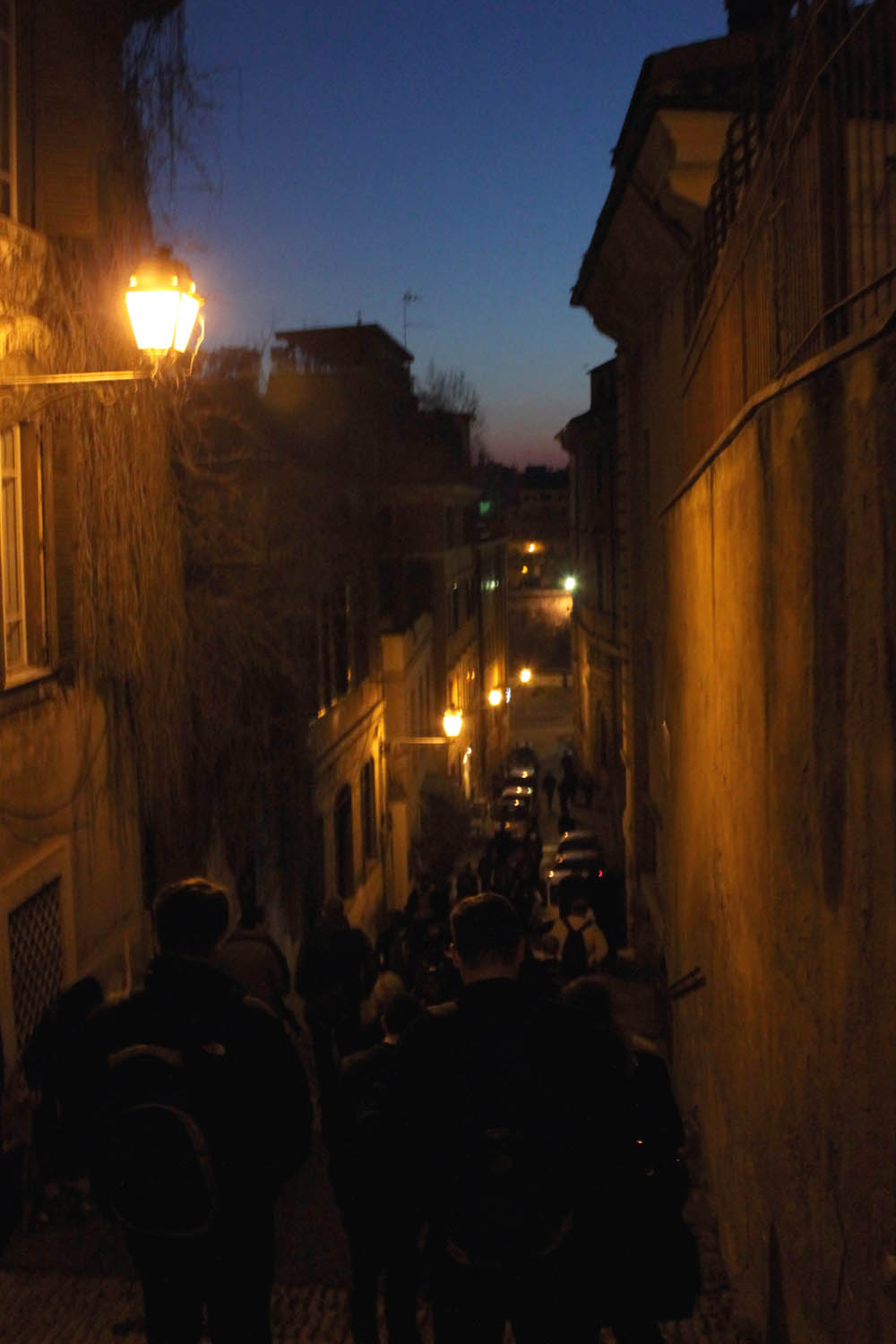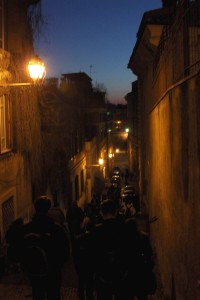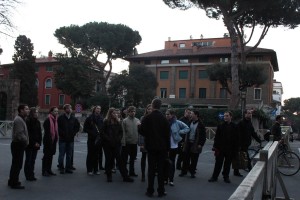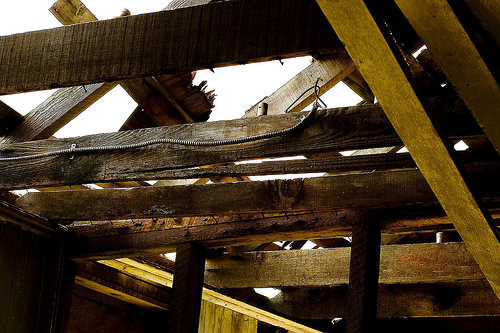At the heart of our faith is the Paschal Mystery: the Passion, Death, Resurrection, and Ascension of Jesus Christ. All of salvation history leads up to and goes forth from these saving events. The purpose of this post is to describe Jesus’ Final week. We call this “Holy Week” for Jesus’ public ministry culminates with his suffering, death and resurrection. What follows is a brief description of each day of Holy Week. It is hoped that you might print out the pdf flyer (Walking-with-Jesus-In-Holy-Week) and read it each day of this week. Prayerfully walk with Jesus in his most difficult and yet glorious week. Plan to attend some or all of the special liturgies of Thursday, Friday and Saturday at your parish. By celebrating them in community, we make them present today and learn again, in a new way, the reality of our Risen Lord alive in our midst.
PALM SUNDAY – Our celebration of Holy Week begins this Sunday as we remember and make present the triumphal entrance of Jesus into Jerusalem to begin his final week and initiate his Passion. All four Gospels recount this triumphant entry that Sunday Morning so long ago, but made present to us today. As you receive your palms, consider that you are part of that vast crowd. How will you journey with Jesus this week? Let the palm remind you to praise him with your prayerful presence during the sacred Triduum. According to Mark 11:11 Jesus returned that evening to Bethany, a suburb of Jerusalem. Perhaps he stayed with his friends Martha, Mary and Lazarus. Pray with Jesus this evening as he considers the difficult days ahead of him.
Monday of Holy Week According to Matthew 21, Mark 11 and Luke 19, Jesus returns to Jerusalem today and, seeing shameful practices in the Temple area, he cleanses the Temple. John’s Gospel also records that he rebuked the unbelief of the crowds. Mark 11:19 records that he returned to Bethany that night. Pray with Jesus as he is zealous to purify us.
Tuesday of Holy Week According to Matthew, Mark and Luke, Jesus again returns to Jerusalem where he is confronted by the Temple leadership for what he did yesterday. They question his authority. He also teaches extensively using parables and other forms. There is the parable of the vineyard (cf Mt 21:33-46), the parable of the wedding banquet, (cf Mt. 22:1). There is also the teaching on paying taxes (cf Mt 22:15) and the rebuke of the Sadducees who deny the resurrection (cf Mt. 22:23). There is also the fearful prophecy about the destruction of Jerusalem if the inhabitants do not come to faith in him. He warns that not one stone will be left on another (cf Mt 24). Continue to pray with Jesus and listen carefully to his final teachings just before his passion.
Wednesday of Holy Week. Traditionally this day was called “Spy Wednesday” for it was on this Wednesday before the crucifixion that Judas conspired to hand Jesus over. For this he was paid thirty pieces of silver (cf Mt. 26:14). Jesus likely spent the day In Bethany. In the evening Mary of Bethany anoints Jesus with costly perfumed oil. Judas objects but Jesus rebukes him and says Mary has anointed him for his burial! (cf Mt 26:6). The wicked are besetting Jesus and plotting against him. Are you praying?
HOLY THURSDAY, marks the beginning of the sacred Triduum, or “three days.” Earlier this day Jesus had given instructions to the disciples on how to prepare for this most holy meal, which will be his last supper. Through the day they make these preparations (cf Mt 26:17). In the Mass of the Lord’s Supper conducted at our parishes, we remember and make present that Last Supper which Jesus shared with his disciples. We are in the upper room with Jesus and the Apostles and do what they did. Through the ritual of washing the feet (Jn 13:1) of 12 parishioners, we unite in service to one another. Through our celebration of this first Mass and Holy Eucharist (Mt 26:26), we unite ourselves to Jesus and receive his Body and Blood as if for the first time. At this Eucharist, we especially thank God for his gift of the ministerial priesthood. After the Last Supper (First Mass) the apostles and Jesus made a short journey across the Kidron Valley to the Garden where he asks them to pray and he experiences his agony (cf Mt 26:30). We too will process in Church with Jesus in the Blessed Sacrament to a garden (the altar of repose) which has been prepared. The liturgy ends in silence. It is an ancient custom to spend an hour before the reposed Blessed Sacrament tonight. We are with Jesus in the Garden and pray as he goes through his agony. Most of our parish churches remain open until close to midnight. It was near Midnight that Jesus was betrayed by Judas, was arrested and taken to the house of the High Priest (cf Mt. 26:47).
GOOD FRIDAY, All through the night Jesus has been locked in the dungeon of the high priest’s house. Early this morning he was bought before a Pilate who transferred his case to Herod. Herod sent him back to Pilate who, sometime in the mid-morning, bowed to the pressure of the Temple leadership and the crowds, and condemned Jesus to a horrible death by crucifixion. In the late morning Jesus was taken by the soldiers through the city and up the hillside of Golgotha. By noon he is nailed to the cross where he hangs in agony for some three hours. He dies around three in the afternoon. He is taken down from the cross and placed in the tomb hastily before sundown. Today is a day of prayer, fasting and abstinence. Whenever possible, Christians are urged to keep today free of work, of social engagements, of entertainment, and to devote themselves to communal prayer and worship. At noon many parishes gather for stations of the cross for recollections of the seven last words of Jesus. Many parishes also offer staions of the cross at 3pm the hour of Jesus death. In the evening, we gather quietly in our parish Churches to enter into time of prayer as we reflect on Jesus death on the cross. We also pray for the needs of the world. To acknowledge the power of the cross in our lives today, we one by one come forward to venerate the cross with a kiss. Our hunger from this day of fasting is satisfied with Holy Communion distributed at the end of this liturgy.Consider too how the apostles might have gathered that night together in fear and prayer reflecting on all that happened.
HOLY SATURDAY – The body of Jesus is in the tomb but His soul is among the dead to announce the kingdom. The hour is coming, and now is, when the dead will hear the voice of the Son of God, and those who hear it will Live (John 5:25). Consider what it must have been like for the dead in Sheol to awaken to the voice of Jesus! Meanwhile The Disciples, heartbroken at the death of Jesus, observed the Jewish Sabbath in sorrow. They had forgotten the promise of Jesus that He would rise. We cannot forget His promise. We cannot forget. Tonight in our parishes after sundown we gather for the Great Easter Vigil where we will experience Jesus rising from the dead. We gather in darkness and light the Easter fire which reminds us that Jesus is light in the darkness. He is the light of the world. We enter into the church and attentively listen to Bible stories describing God’s saving work of the past. Suddenly, the church lights are lit and the Gloria is sung as we celebrate the moment of Christ’s resurrection. He Lives! In the joy of the resurrection we then celebrate the Sacraments of Baptism, Confirmation and Eucharist for our Catechumens and Candidates who have prepared for many weeks for this night. As a Church we sing Alleluia for the first time in forty days. Do everything you can to be present on this evening and invite friends and family to join. Our Vigil ushers in an Easter joy that never ends!




